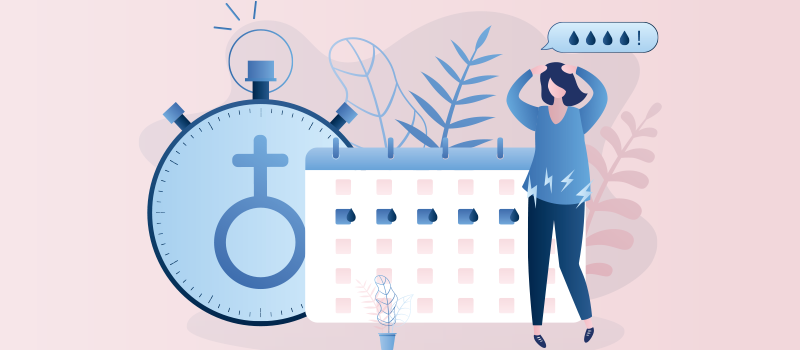What’s the Buzz
The Bee Healthy Blog
Lipedema: Symptoms, Causes, & Treatments

Key Takeaways
-
People with lipedema have an abnormal buildup of adipose tissue (fat cells) in their butt, thighs, and calves.
-
The main cause of lipedema is unfortunately not known, but may be inherited. Risk factors for lipedema, therefore, include female gender, a family history of lipedema, changes in female hormones, and a BMI over 35.
-
There is no cure for lipedema, but treatments are available to help control symptoms like pain and improve mobility.
Lipedema is a condition in which there is an abnormal symmetrical buildup of fat tissue in both sides of the lower body (and sometimes arms) that does not respond to lifestyle changes like diet and exercise.
Lipedema occurs almost exclusively in women and people assigned female at birth. It is a relatively common disease and affects a significant percentage of women, potentially up to 11% of women worldwide. The exact cause is unknown.
There is no cure for lipedema, but treatments can help to manage the condition. Please continue reading to learn about the risk factors for lipedema as well as the symptoms and treatment options. It will help clear some extremely common misconceptions about this medical condition.
What is the main cause of lipedema?
The main cause of lipedema is unfortunately not known. But 20-60% of people with this condition have family members who also have it, so it may be inherited. Lipedema almost always occurs in females and is very rare in males. There may be a connection to hormonal shifts because lipedema tends to get worse during puberty, pregnancy, and menopause and in women taking hormonal birth control (oral contraceptive pills). More than 50% of people with lipedema are overweight or obese with a body mass index (BMI) above 35. While obesity is a risk factor, it's not a universal characteristic of all individuals with lipedema. Some people with lipedema may have a normal BMI.
Risk factors for lipedema, therefore, include female gender, a family history of lipedema, changes in female hormones, and a BMI over 35.
Is lipedema a malfunction of the lymphatic system?
Lipedema is often confused with lymphedema, but they are different conditions. Lymphedema is a build-up of lymph fluid in the soft tissues of the body due to damaged or blocked lymph vessels. However, lipedema can lead to secondary lymphedema or lipolymphedema due to pressure from the fat cells on the lymph vessels.
Lipedema is also different from chronic venous insufficiency, a condition in which there is pooling of blood in the legs due to damaged valves in the blood vessels (leg veins). Chronic venous insufficiency can cause swollen legs and other symptoms that are similar to lipedema.
Lipedema is not the same as Dercum’s disease, which belongs to a group of rare adipose disorders characterized by multiple painful lipomas (fat tissue collections) in the loose connective tissue.
Having lipedema is not the same as being overweight or obese. Lipedema patients are unable to lose weight or fat in the affected areas and find it difficult to achieve a healthy weight with diet and exercise.
What are the symptoms of lipedema?
People with lipedema have an abnormal buildup of adipose tissue (fat cells) on both sides of their lower body, causing a symmetrical swelling. This buildup of subcutaneous fat occurs mainly in the butt, thighs, and calves. Sometimes, the hips and upper body (upper arms) are also affected. Lipedema fat usually does not collect in the hands and feet.
There are different types of lipedema, depending on where the fat builds up. You can have more than one type based on the distribution of fat tissue:
-
Type I: Between the navel and hips
-
Type II: Between the hips and knees
-
Type III: Between the hips and ankles
-
Type IV: Between the shoulders and wrists
-
Type V: Between the knees and ankles
The fat buildup may be accompanied by bumps that feel like pebbles under the skin, pain with only mild pressure in the affected areas, swelling, heaviness in the legs, easy bruising, tiredness, and flu-like symptoms.
According to the Fat Disorders Research Society, lipedema can lead to complications such as difficulty walking, secondary lymphedema, joint problems, flat feet, and knock knees. It can also have a significant impact on mental health, leading to anxiety, depression, and a poor quality of life.
What does stage 1 lipedema look like?
Lipedema is a chronic (long-term) condition. The disease progresses slowly over time, starting with mild symptoms that get progressively worse. Symptoms in the various lipedema stages can be as follows:
-
Stage 1: Normal-looking skin with bumps under the surface, pain, and bruising in the affected areas.
-
Stage 2: Uneven skin surface with dimpling that resembles cottage cheese, walnut shells, or quilted material.
-
Stage 3: Large folds of fat and swollen legs that look like rectangular balloons, causing difficulty walking.
-
Stage 4: Lipedema with lymphedema.
How do doctors diagnose lipedema?
Doctors can diagnose lipedema based on a physical examination and medical history. Lipedema fat tends to be painful, unlike other fat. Also, there is a clear difference between the size of the feet, which are unaffected, and the lower legs, which are affected. There may also be a difference from the normal skin surface in affected areas (people with lipedema tend to bruise easily).
Healthcare providers may order additional tests such as ultrasound, MRI, CT scan, bone scans, and nuclear medicine imaging to rule out other conditions that can look like lipedema.
Can lipedema go away?
There is no cure for lipedema, but treatments can help to control symptoms like pain and improve mobility.
Can you lose lipedema weight?
Losing lipedema weight can be challenging. Reducing calories and working out do not get rid of lipedema weight. However, you can slow the progression of the condition by eating a healthy diet and exercising regularly, especially if you receive an early diagnosis and start lipedema treatments early.
What is the most effective treatment for lipedema?
Conservative treatments
For mild symptoms, lipedema treatments include physical activity (walking, cycling, swimming, aqua aerobics) and other conservative treatments such as an anti-inflammatory diet, heart-healthy diet, skin moisturizer, compression stockings, and physical therapy.
Medications
A healthcare provider may prescribe the following medications to lipedema patients:
-
Amphetamines and phentermine to support weight loss.
-
Metformin and resveratrol to prevent fibrosis (scarring) and reduce inflammation.
-
Diosmin, a substance found in citrus fruits, to reduce swelling.
-
Selenium, a mineral, to improve inflammation and reduce leg size and lymphedema.
Amphetamines and phentermine support weight loss, but it's important to note that the use of these medications for weight loss is a subject of debate, and not all healthcare providers may prescribe them for lipedema. These medications are sometimes prescribed, and people should follow their healthcare provider's advice.
Certain medications that can cause fluid retention should be avoided by people with lipedema, for example, blood pressure medications like calcium channel blockers and beta blockers, diabetes medications like thiazolidinediones, anticonvulsants like gabapentin, and oral corticosteroids.
Nonsurgical lipedema treatments
Nonsurgical (noninvasive) treatments for lipedema include manual lymphatic drainage (massage and stretching), complex decongestive therapy (massage plus wraps), and wearing compression garments or a pneumatic compression device on the legs.
Surgery for lipedema
Traditional liposuction can be done under general anesthesia to remove fat and improve mobility. Tumescent liposuction can be done using local anesthesia. For people who have a body mass index (BMI) over 35, bariatric surgery (weight loss surgery) may be an option.
Save on Your Lipedema Medication with BuzzRx!
Manage your lipedema medication costs with BuzzRx coupons. Here are direct links to substantial savings for each medication:
-
Phentermine Coupon: The retail price is as high as $45.15, but with BuzzRx, you might pay as low as $6.22.
-
Metformin Coupon: The retail price is about $109.15, but with BuzzRx, you might pay as low as $4.16.
-
Resveratrol Plus Coupon: Save with BuzzRx coupons, with prices as low as $10.86.
-
Selenium Sulfide Coupon: Pay as low as $6.77 with your BuzzRx coupon.
-
Gabapentin Coupon: Prices range from $57.99 to $478.99. With a BuzzRx coupon, pay between $9.03 and $24.97.
Remember, these coupons are widely accepted at over 60,000 pharmacies, including major chains like CVS, Walgreens, and Rite Aid. Just present your coupon at the pharmacy to ensure you're getting the best possible price.
References:












SOCIAL